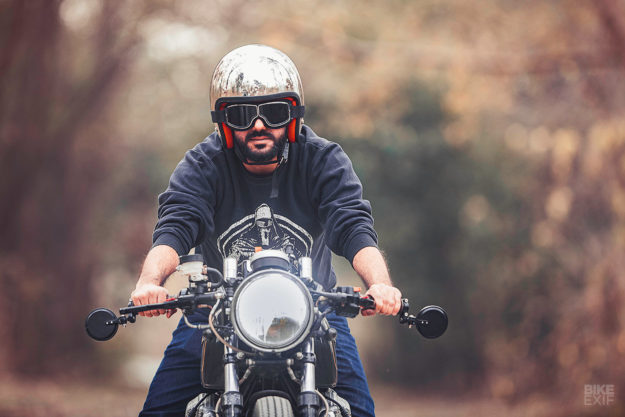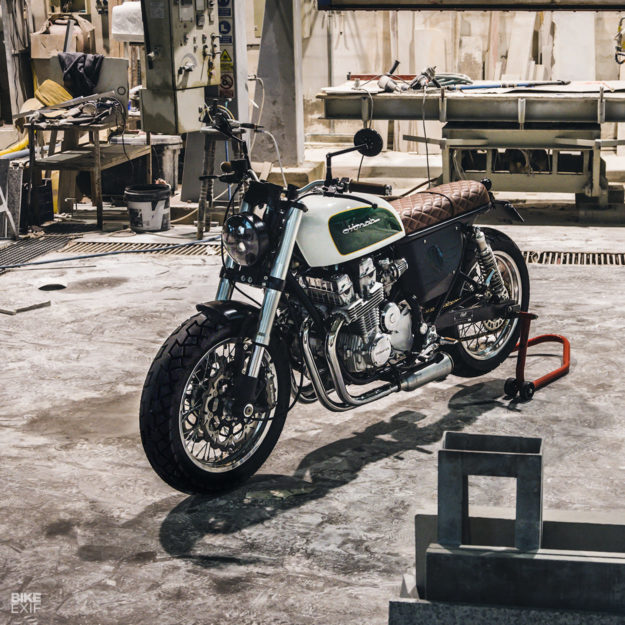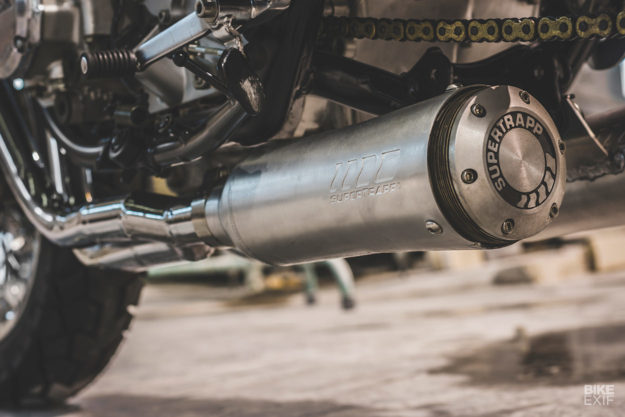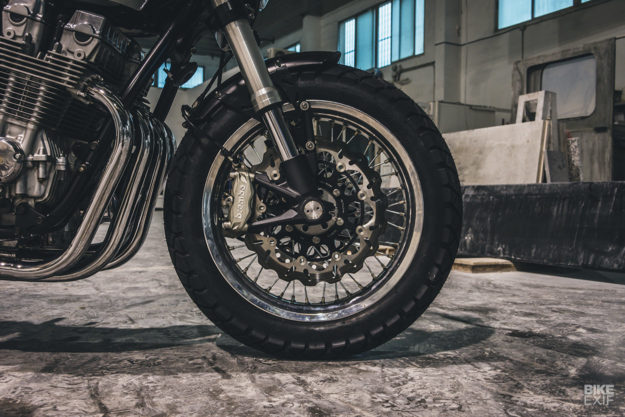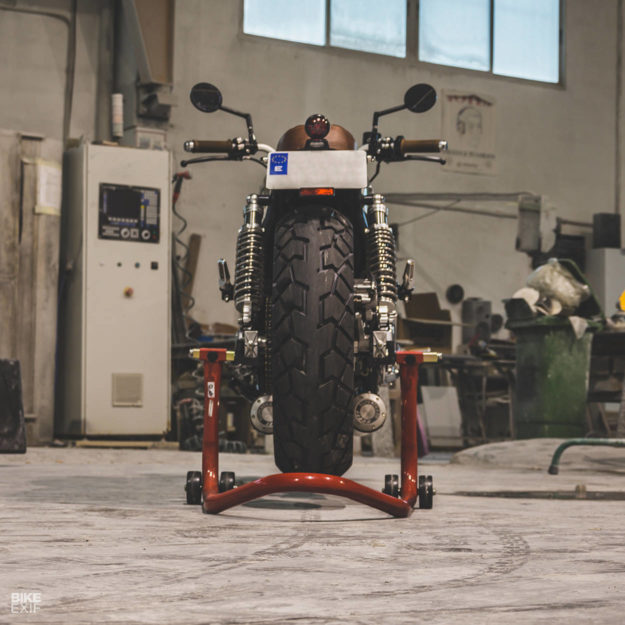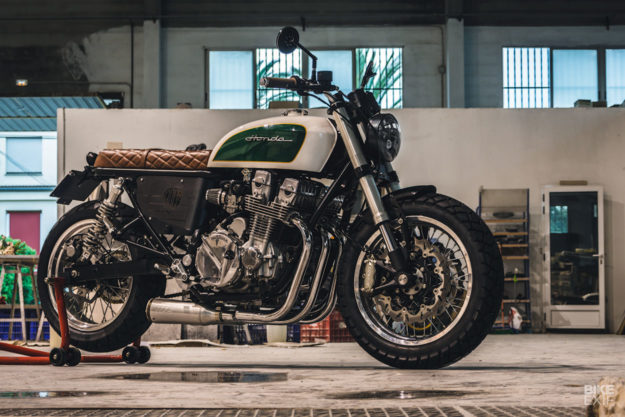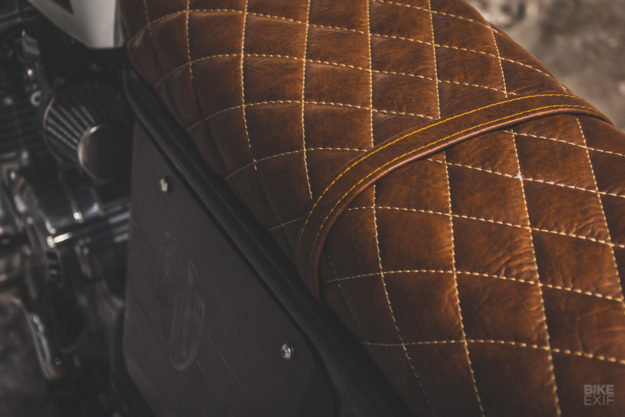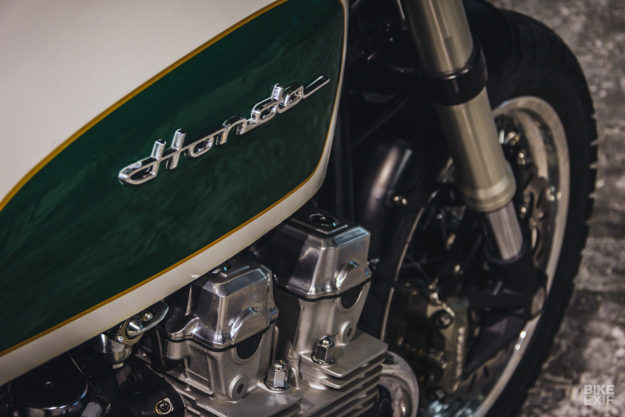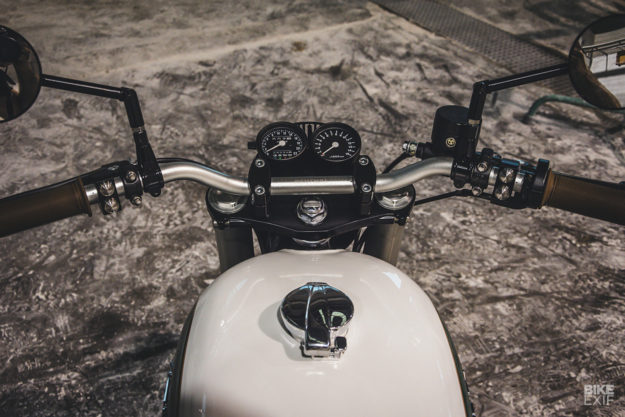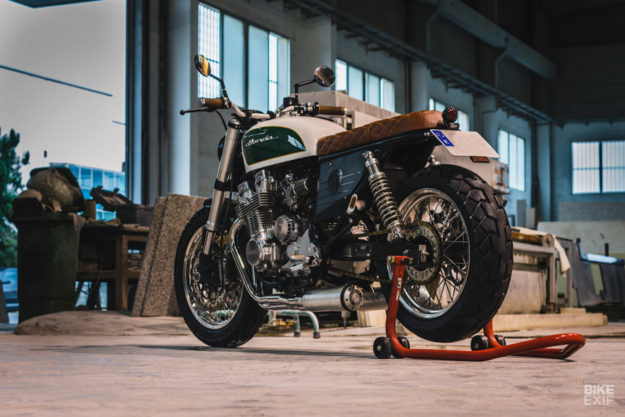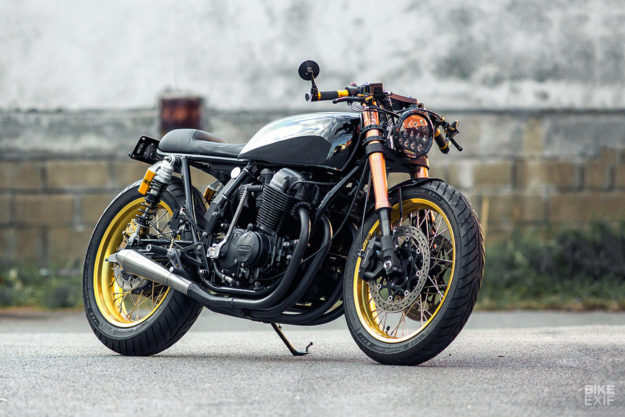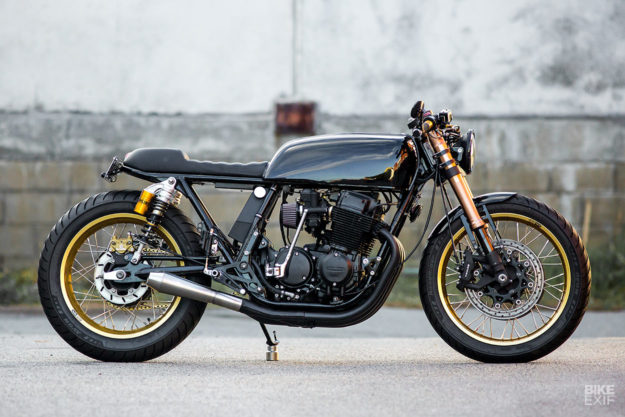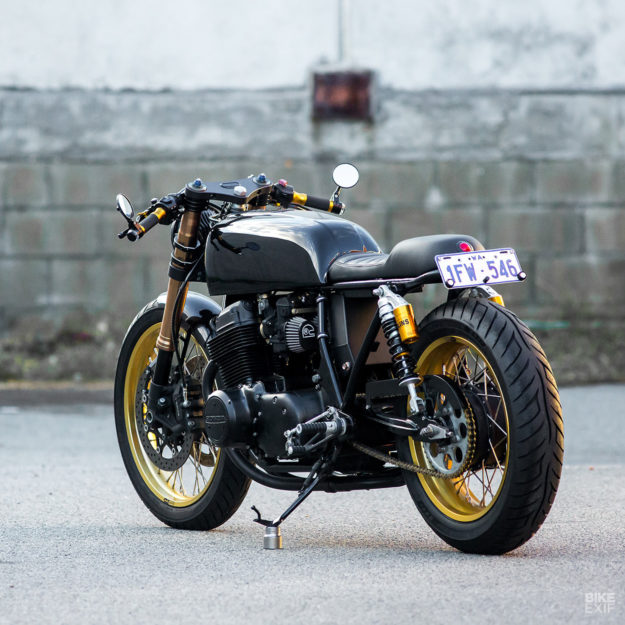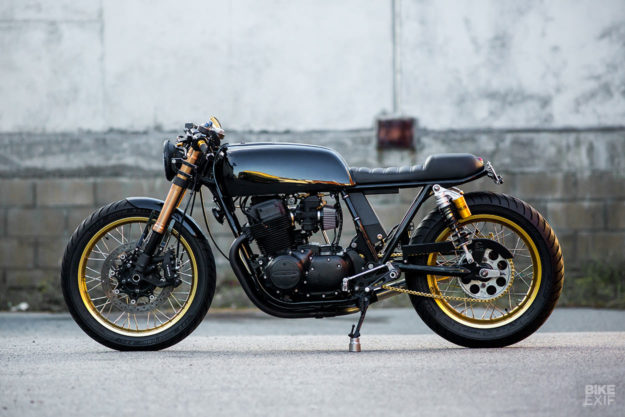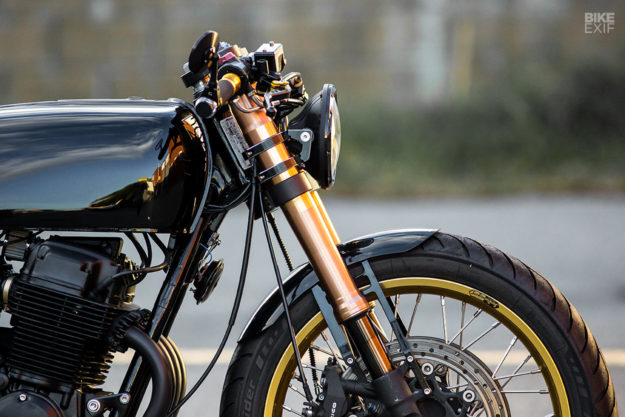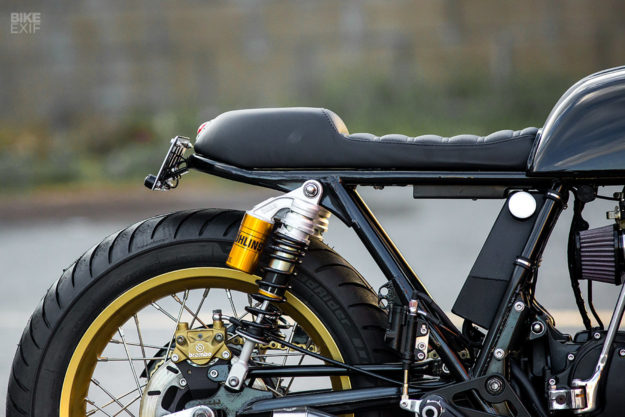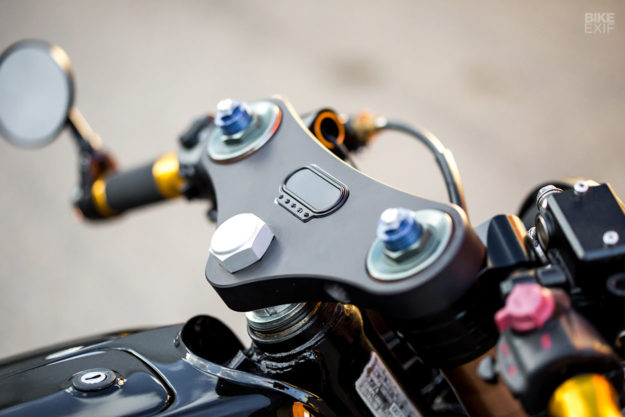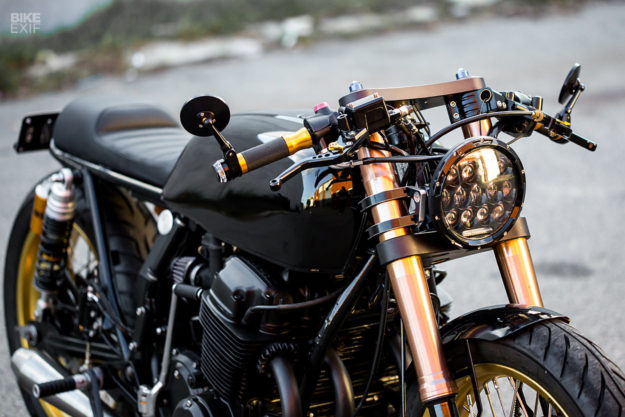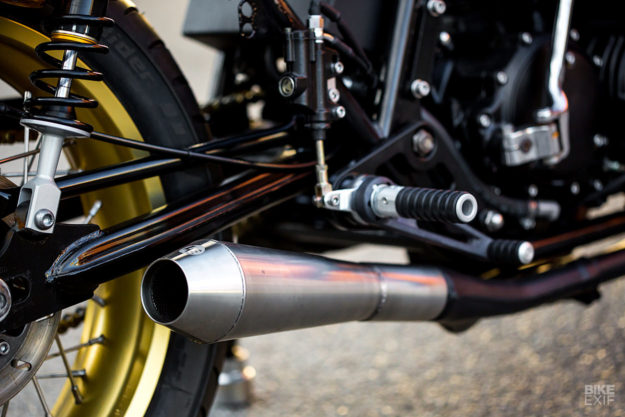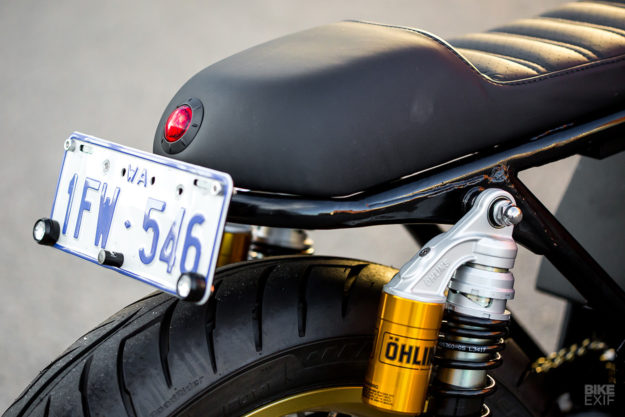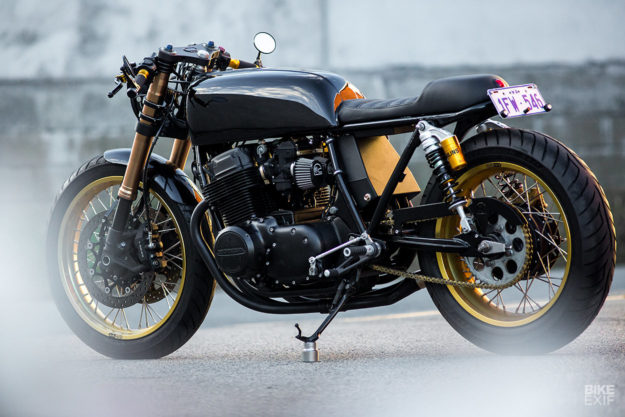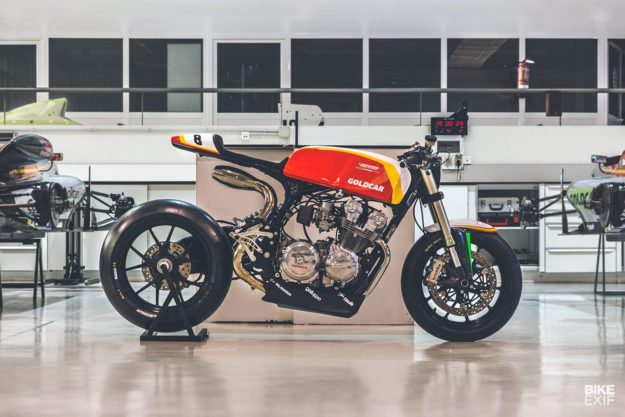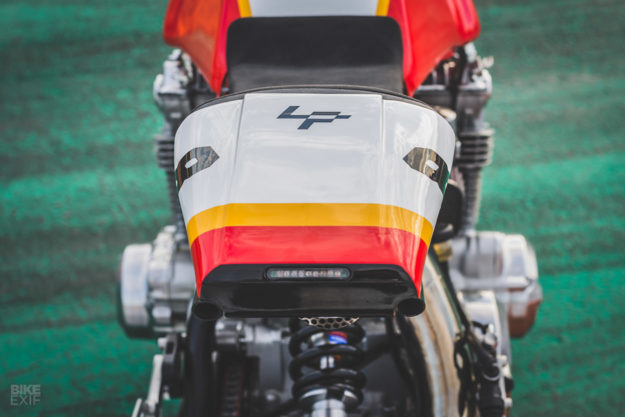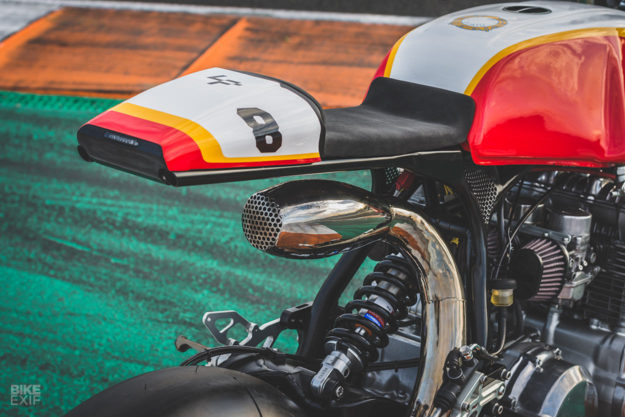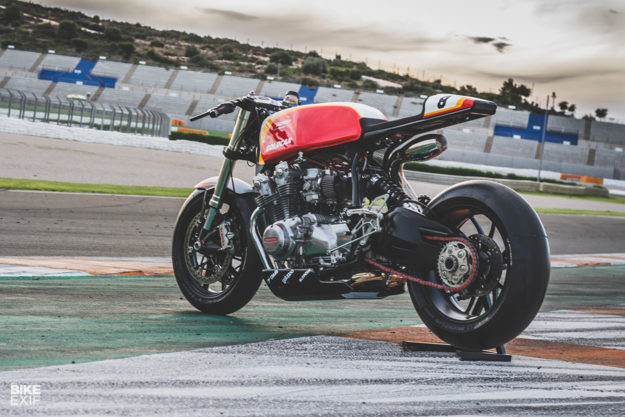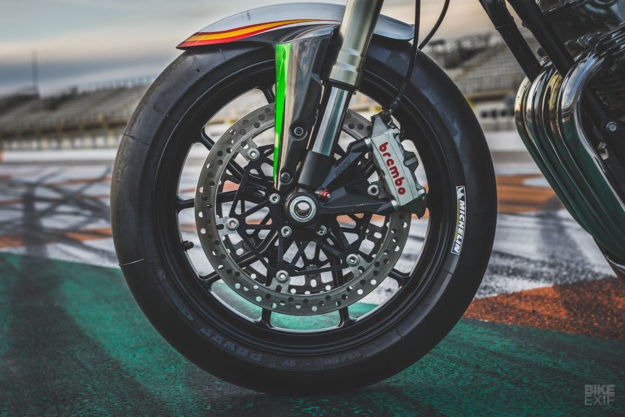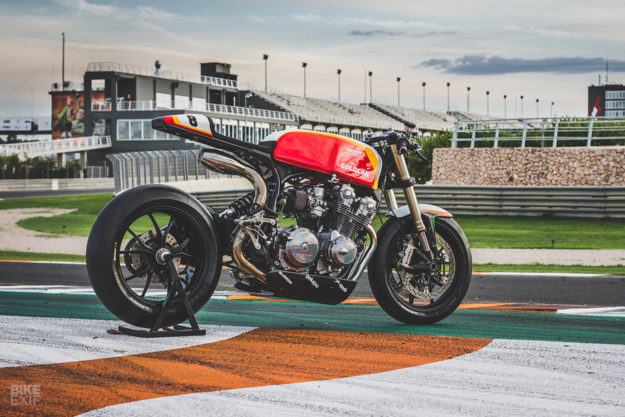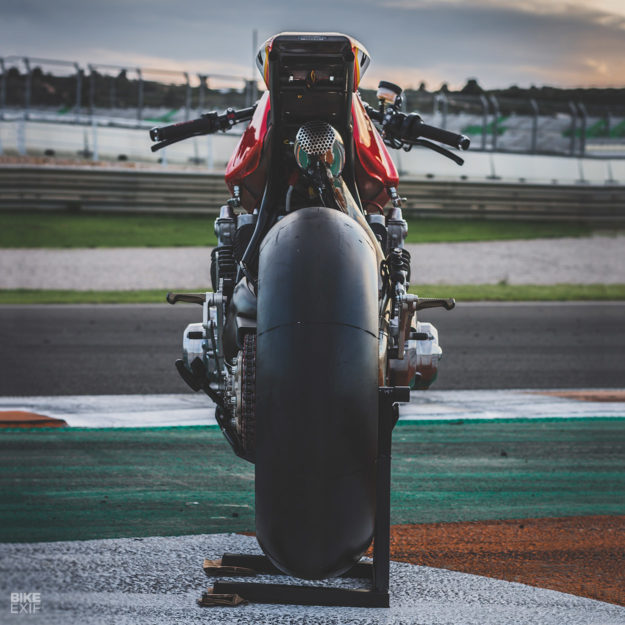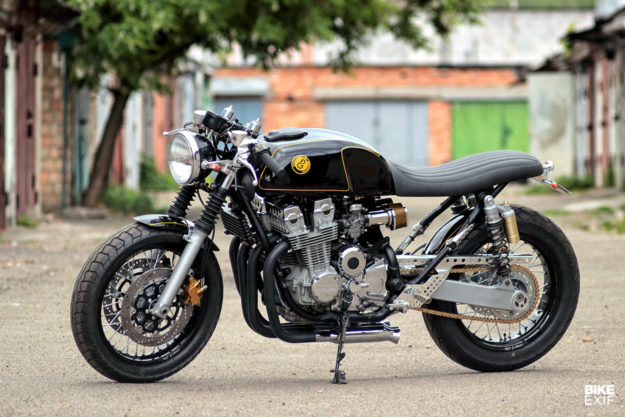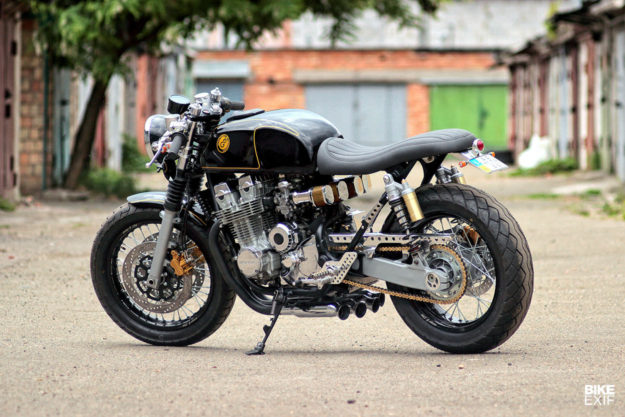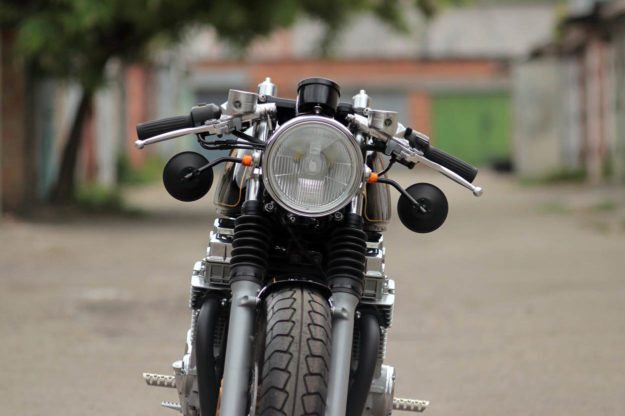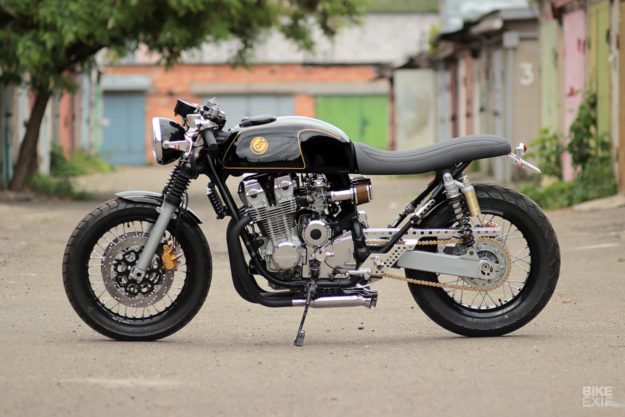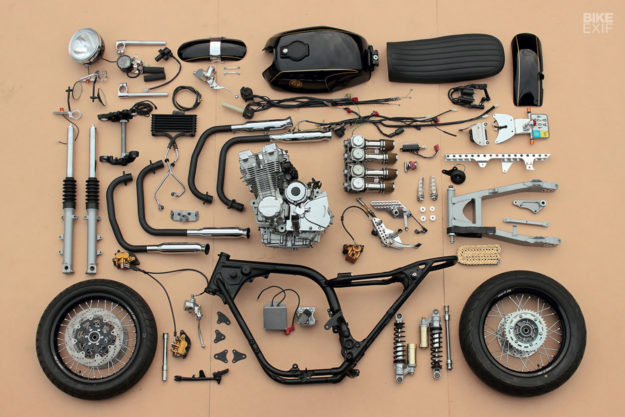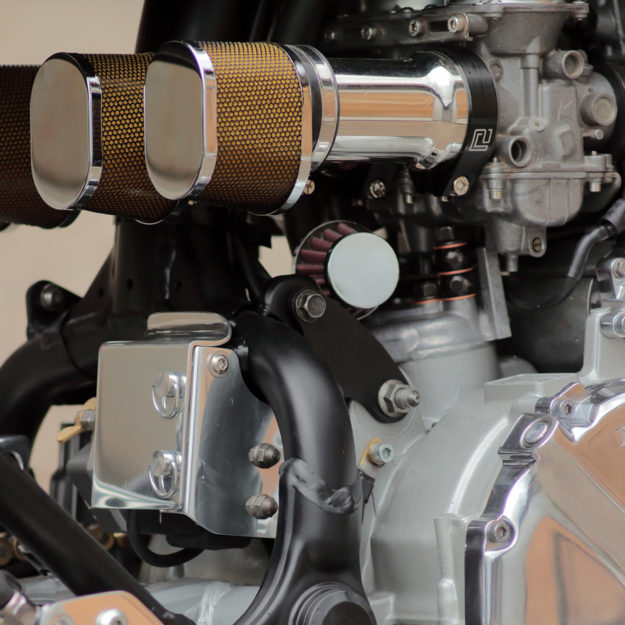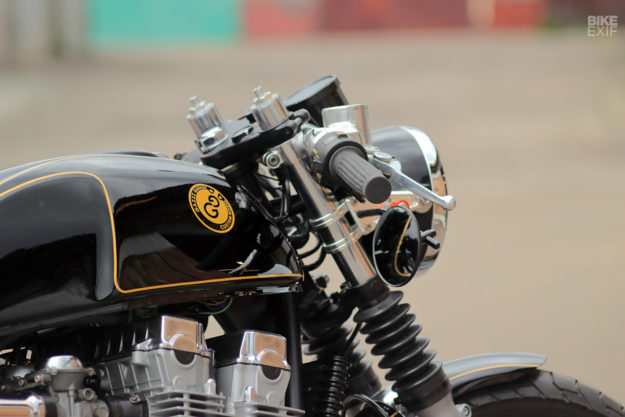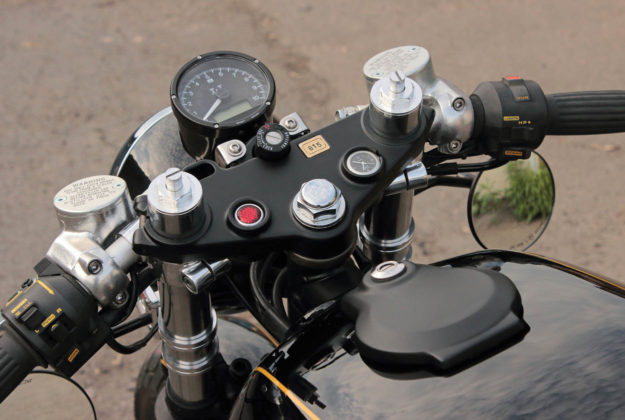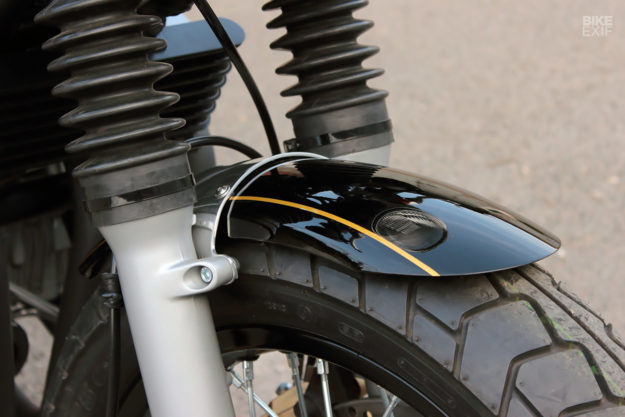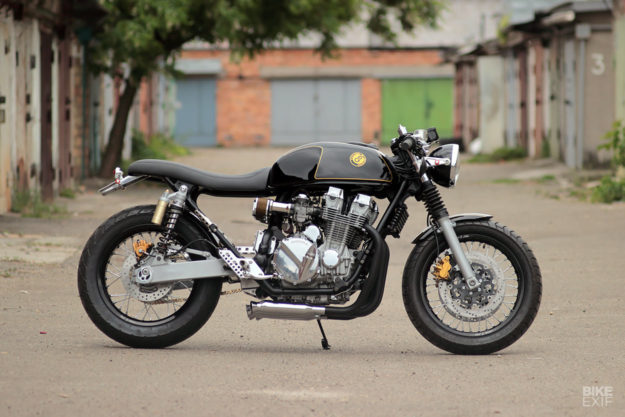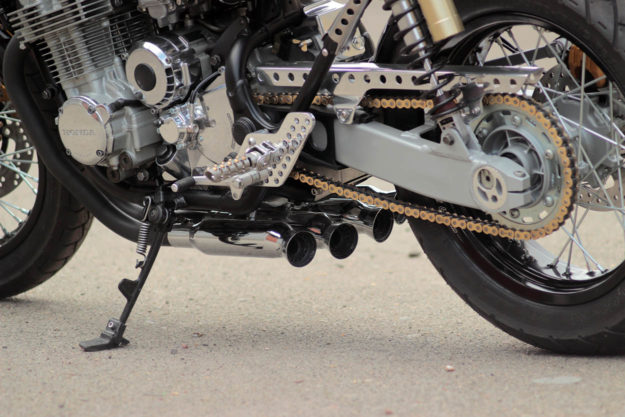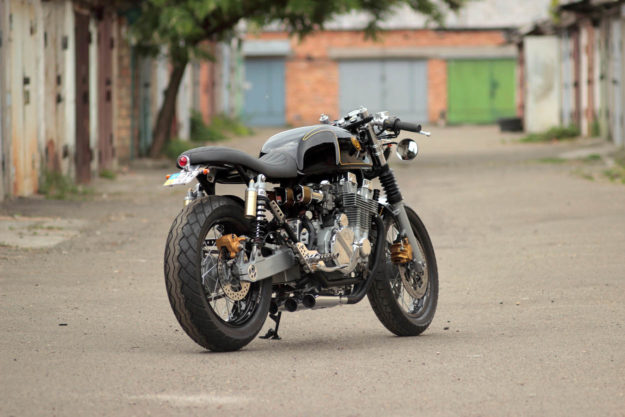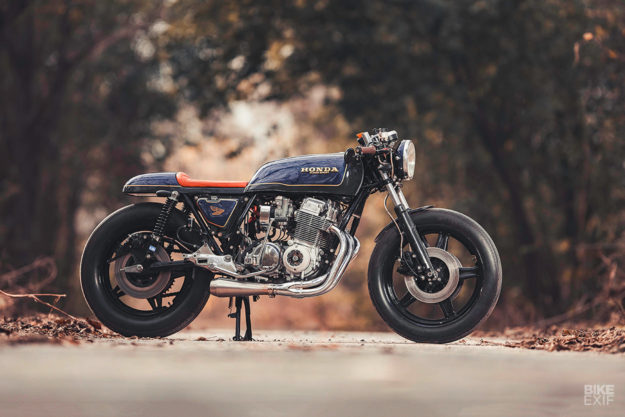
There are around 2.5 million motorcycles on the road in Pakistan. Which sounds impressive until you learn that the population is over 210 million—and most of those bikes are tiny Chinese- and Japanese-made commuters.
The custom scene is virtually non-existent, because the import duty on motorcycles is a whopping 50%, and there are sales taxes on top. Which also explains why there are only about a dozen Honda CB750s in the whole country.
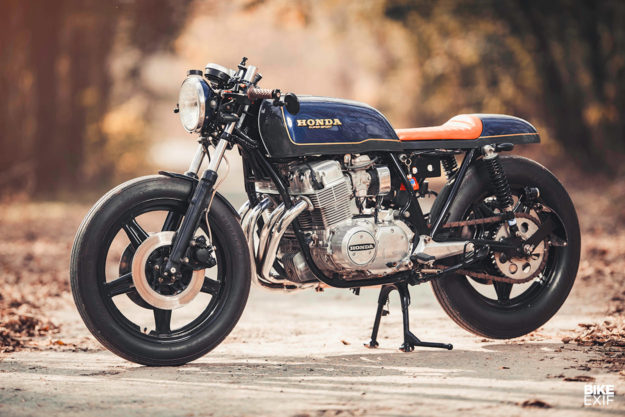
This is one of those CB750s: a 1977 Super Sport owned by reader Haris Aziz of Islamabad. And it’s the first bike we’ve featured from the world’s sixth most populous country.
“I had no plans to make a cafe racer: I just loved the model as it is,” Haris tells us. “This Super Sport was a runner, but in poor condition. Most of the fittings were either broken or covered in surface rust.”
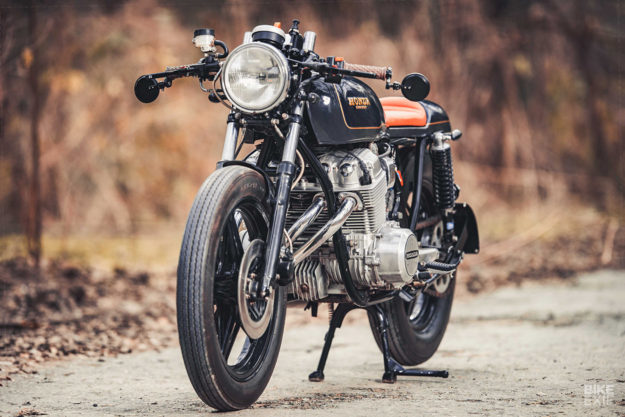
Haris rode the CB750 for a year and resisted the temptation to mess with it. “I absolutely adore the cafe racer look, but with imports banned, the remaining CB750s are the last of the breed.”
But when he couldn’t delay the repairs any longer, Haris found out that a stock restoration would cost too much—due to the poor rupee-dollar exchange rate. He decided to have it custom built.
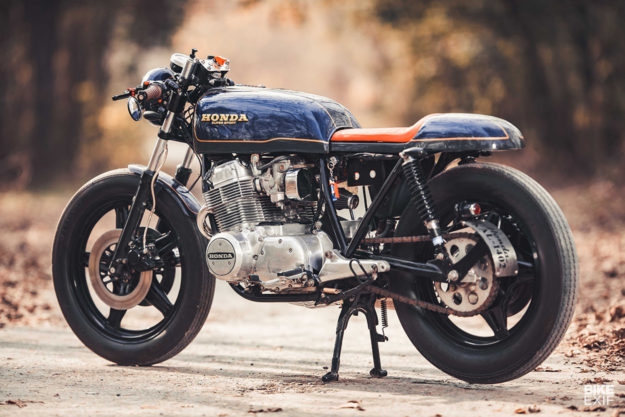
“I chose Zeeshan Motorsports in Karachi to do the job,” he says. “They have exquisite attention to detail and experience with big Japanese bikes.” Karachi, by the way, is a 20-hour, 900-mile drive from Haris’ home city.
Haris designed the bodywork (“using my horrible Photoshop skills”) and ZMS beat it out to the exact same proportions. Interestingly, the guys used the Golden Ratio to achieve the perfect balance of tank, seat and cowl.
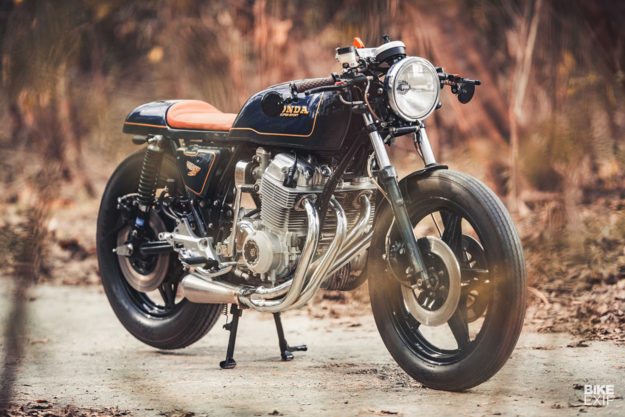
“A Bike EXIF how-to-article also inspired me: I made sure the angles were all perfect, such as the angle of the headers to the frame, the muffler to the seat, and so on.”
The subframe is actually unmodified, and retains the original seat hoop— although it’s been detabbed to give it that smooth and sleek look.
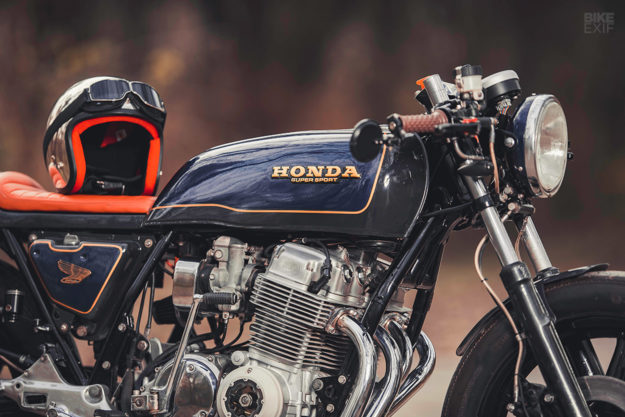
While the new bodywork was being hammered out, ZMS also carried out a complete engine overhaul and fitted a Barnett racing clutch.
The ‘sidewinder’ exhaust was custom-made in Pakistan with a stainless steel muffler. “Tuning the carburetors was a challenge,” Haris reveals. “So we built a custom airbox, mounted a single pod filter, and switched to a Suzuki GS1000 CDI ignition to make starting and riding more reliable.”

There’s a new headlight—which at 4400 lumens is a huge improvement on the original—and an aftermarket taillight and blinker set.
There’s also new wiring throughout, and an interesting starting mechanism: an aircraft-style toggle for the kill switch, and a starter button right on top of the triple tree. (“It makes starting her a joy every time!”)
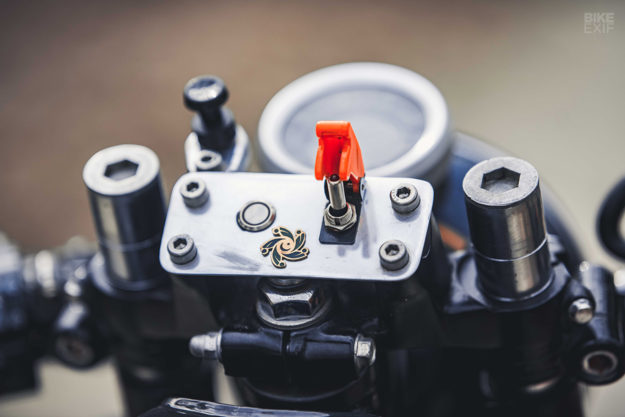
“The Honda was built on a budget, so unfortunately we couldn’t fit high-end gear such as the Motogadget m.unit,” says Haris. “But that doesn’t rule out future upgrades!”
There were no corners cut on the paint scheme, though. It accentuates the flat, free-flowing bodywork, with coach lines hand painted by an expert local craftsman. The frame and (original) wheels were painted black, and the deep blue tank and cowl make the raw metal of the engine pop.
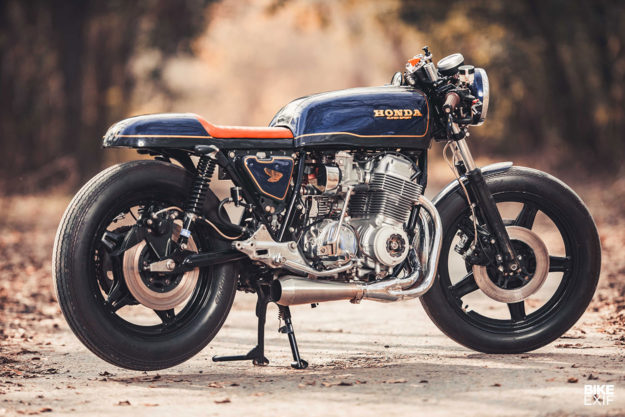
“We’re all extremely proud of the way she turned out,” says Haris. “Especially given the limited knowledge and budget we had.”
“The cafe racer culture is just starting here in Pakistan, but most bikes are single cylinders and no one is venturing into the complicated world of big four-cylinders.”
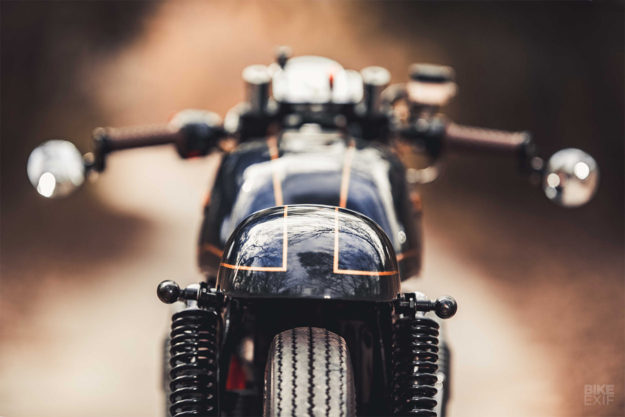
We reckon it’s an amazing result. And proof that sometimes, constraints can force you to be more creative.
Images by Saad Zia Photography.
